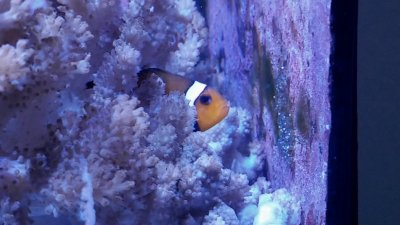Hi all -
Nice to "meet" you! I'm just getting into the hobby with the hope of staving off a long boring winter in Minnesota and I've wanted a reef tank since I was about 8....finally doing it!
This is the plan I've managed to come up with with the research I've done. I know that 20 gal is a bit small for a beginner, but I live in a second floor apartment, and I am not ready to commit to a huge tank, both for the sake of the weight and the footprint. Hopefully this is not a terrible idea....
Anyway, I would love feedback on the following plan:
Specific questions:
How does the bioload look?
Do I have enough utilitarian fish/CUC to help keep the algae at bay?
Are the fish compatible?
How long should all of this take to set up from cycling to finally adding the corals?
Hard goods:
Livestock plan:
Coral (mixed LPS and soft, but adding these down the road):
Thank you so much for your advice!
Nice to "meet" you! I'm just getting into the hobby with the hope of staving off a long boring winter in Minnesota and I've wanted a reef tank since I was about 8....finally doing it!
This is the plan I've managed to come up with with the research I've done. I know that 20 gal is a bit small for a beginner, but I live in a second floor apartment, and I am not ready to commit to a huge tank, both for the sake of the weight and the footprint. Hopefully this is not a terrible idea....
Anyway, I would love feedback on the following plan:
Specific questions:
How does the bioload look?
Do I have enough utilitarian fish/CUC to help keep the algae at bay?
Are the fish compatible?
How long should all of this take to set up from cycling to finally adding the corals?
Hard goods:
- Redsea Max Nano 20 gal AIO (includes protein skimmer, ATO chamber, LED)
- 1 Hydor Koralia Nano Evolution Powerhead 425 Gph
- Bulk reef supply titanium 200 watt heater + controller
- Considering a small UV sterilizer for Ich and Dinos, since a full quarantine set-up is going to be a lot to start out with.
- Real reef rock
- Caribsea special grade live sand
- Dr. Tim's
- Vibrant
- ESV B-Ionic Salt mixer kit (Tropic Marin Pro is out of stock EVERYWHERE)
Livestock plan:
- 2 oscillaris clowns (or one if they can truly live alone)
- Orchid Dottyback
- Tailspot blenny
- Yellow watchman gobi (possibly with a pistol shrimp - do they have to be housed together?)
- 1 cleaner shrimp
- 1 emerald crab
- 2 snails (species TBD)
Coral (mixed LPS and soft, but adding these down the road):
- Zoanthids
- Mushrooms
- Hammers
- Leathers
Thank you so much for your advice!




















